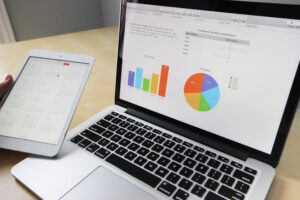Quant funds utilize mathematical models, advanced algorithms, and statistical methods to make investments and conduct transactions.
Table of Contents
ToggleWhat is a Quantitative Hedge Fund?
Quant hedge funds depend on the quantitative investigation, computer modeling, and statistical models to select their investments. This technique relies heavily on research and mathematical information to predict venture outcomes. Ordinarily, hedge funds are restricted only to accredited investors. However, anyone can still partner with a financial consultant to assemble a portfolio and achieve their money goals.
Collecting resources from affluent individuals, hedge funds utilize speculative methods such as short-selling and leverage to secure higher profits. These practices necessitate calculated risks to produce the highest amount of money possible while limiting potential losses. In addition, Quant hedge funds use complex models and algorithms to vet data and take action in line with their findings. Since they can potentially find opportunities before other investors, quant hedge funds can capture those opportunities quickly through their technological edge.
Why Should Investors Use Quantitative Funds?
In recent years, quant funds have become increasingly appealing due to their many benefits. By doing away with human judgment, these funds hold a neutral bias and eliminate any emotions. That has the potential for enabling better decision-making and cutting down the possibility of mistakes through human error, common with traditional investing. What’s more, quant funds often have lower management costs, rendering them an economical vehicle for investors.
As a result of their continuous application of an investment model, quant funds have the ability to develop and improve upon their risk management – especially in the face of ever-changing market changes. Moreover, by computerizing and codifying a strategic approach to investing, quant funds can gain speed advantages that can exist in minor gaps in price. Quant funds often outperform traditional trading when it comes to decision-making. These quant funds also rely on robust investment algorithms rooted in quantitative analysis that are programmed to take advantage of differences within the market and yield alpha returns for investors. These benefits make quant funds a sought-after vehicle for investors looking for measured investment strategies.
Why Should Investors Avoid Quant Funds?
Quant funds are a known investment approach that draws on quantitative decision-making models. These models may prove successful in some market scenarios. However, there are certain drawbacks related to it. Primarily, the historical data quant funds use to decide might not always be precise in predicting future results. Thus, these models might not be able to foresee unexpected events, including pandemics or other major calamities. Furthermore, rigorous and ongoing back-testing is essential to ensure they act as predicted – but even then, new market events continue to emerge.
Additionally, a large number of scenarios can be integrated into the quant models. That might result in wrong buy/sell orders if new situations emerge. Another area to be mindful of is, that the application of Artificial Intelligence (AI) has the potential to make numerous quantitative models deliver similar decisions in synchronicity which could give rise to contagion issues in finance markets. Lastly, some models have no human sentiment: which is both an advantage and a possible concern as they may miss opportunities. All these elements need to be considered when putting money into a quant fund since they might greatly affect returns.
How to Understand Quantitative Hedge Funds
Quant funds strategies are programmed to manage the fund and make decisions without any direct intervention from human fund managers. Quantitative analysis is used instead of traditional fundamental analysis, and these strategies are often referred to as the “black box” due to the secrecy surrounding their algorithms.
A growing number of investors are turning to quant funds. This popularity is driven by advances in big data and the availability of different types of information and modelling techniques.
Quantitative Investment Process
Quantitative investment involves the combination of passive index funds and active management. Rather than a fund manager’s judgment, computers are used for making timing decisions. This process consists of three stages: input system, forecasting, and portfolio building.
The input system collects data from various sources, such as economic indicators, news reports, and financial statements. The forecasting engine then uses this data to predict future market movements. Finally, the portfolio construction stage uses these predictions to determine which investments should be made to maximize returns while minimizing risk. By using this systematic approach, quant funds are able to take advantage of opportunities that traditional fund managers may otherwise miss.
Input System
The first step in the quantitative investment process is the input system. This stage involves providing all the necessary inputs, such as market data, rules, and company data. Market data includes interest rates, inflation, GDP growth rate, etc., while company data include revenue growth, earnings growth, cost of capital, dividend yield, price-earnings ratios, and other related factors. At this stage, experts remove undesired stocks, such as high volatility or a huge debt burden, from the model. This initial screening mechanism helps to eliminate companies that are unlikely to generate alpha from consideration.
Forecasting Engine
The forecasting engine is an essential part of the investment process. It generates estimations for expected returns, prices, and risk parameters. This helps investors make informed decisions about their investments. The forecasting engine also evaluates stocks by analyzing their financial data. This includes looking at past performance, current trends, and future projections. By doing so, investors can determine which stocks will likely be profitable in the long run.
Portfolio Construction
Portfolio construction is the third step in the investment process. It involves determining the composition of a portfolio and how it should be constructed to achieve desired returns and reduce risk. This can be done using optimizers or heuristics-based systems, which use quantitative models to assign appropriate weights for each stock to generate desired returns and minimize the risk at acceptable levels.
Artificial Intelligence in Quant Funds
New breakthroughs in artificial intelligence are paving a new path to creating more advanced quant funds. As pioneering quant funds start to adopt AI and ML into their development, we can see breakthroughs in quant fund performance. This is on account of strong advancement in the input of data, the engine for modelling and portfolio creation.
FAQ
Why Do Quant Funds Need So Many People?
Due to fluctuating market conditions, strategies don’t have an endless lifespan. As more firms leverage them, their effectiveness lessens. To keep achieving success, changes and new approaches are essential. Funds need to continually developed, tested, proven and their logic enhanced.
What are the top quant funds looking for?
The top quant funds are looking for the best of the best when it comes to candidates. They want individuals with strong technical skill sets, such as a Ph.D. in Mathematics, Physics, or Computer Science, who can bring something unique to the table that they don’t already have. This could include knowledge of machine learning techniques, high-performance C++ programming, Linux kernel tuning, network hardware latency optimization, or specialist portfolio construction methodologies. Furthermore, these funds are also interested in candidates who have a successful quantitative trading track record from the past.
Why do quant funds fail?
Poor operational management is the primary cause of hedge fund failure. Yet, in April 2021, hedge funds reached new heights due to impressive gains and investors feeling confident.



